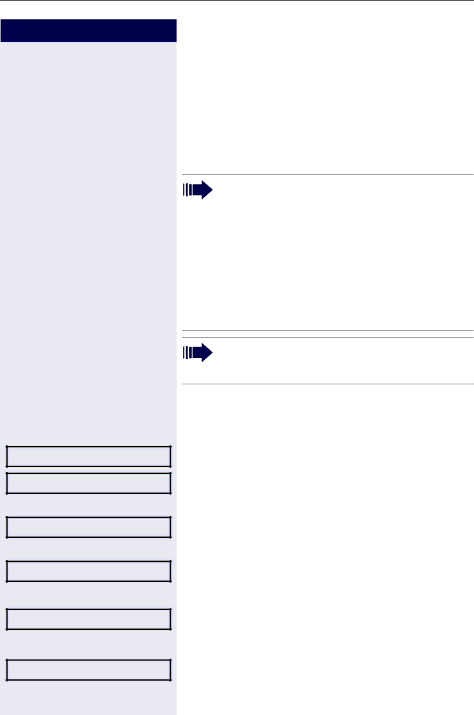
Basic functions
Step by step
S :or
Forwarding on?
1=all calls?
or
2=external calls only?
or
3=internal calls only?
j
Save?
Forwarding off
Call forwarding
Using variable call forwarding
You can immediately forward internal or external calls to different internal or external telephones (destinations). (External destinations require special configuration in the system.)
When call forwarding is active, a special dial tone sounds when you lift the handset.
If DID DTMF is active (contact your service per- sonnel), you can also forward calls to this desti- nation. Destinations: Fax = 870, DID = 871,
If you are a call forwarding destination, your dis- play will show the number or the name of the ori- ginator on the upper line and that of the caller on the lower line.
Special features must be taken into considerati- on if your telephone operates with HiPath 5000 (system networking via PC network) Æ page 92!
If configured: Press the "Call forwarding" key.
Open the idle menu Æ page 15.
Select and confirm the option shown.
Confirm,
select and confirm the option shown,
select and confirm the option shown
Enter the destination number.
Confirm the option shown.
Deactivating call forwarding
Select and confirm the option shown.
28